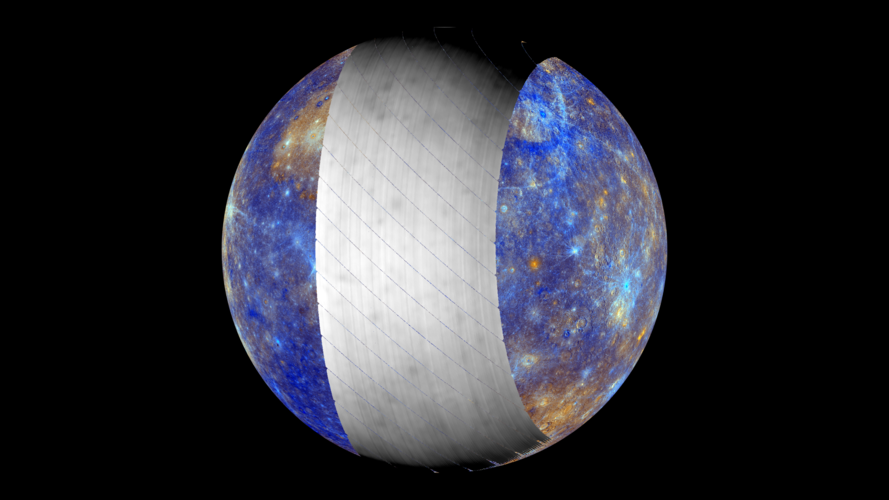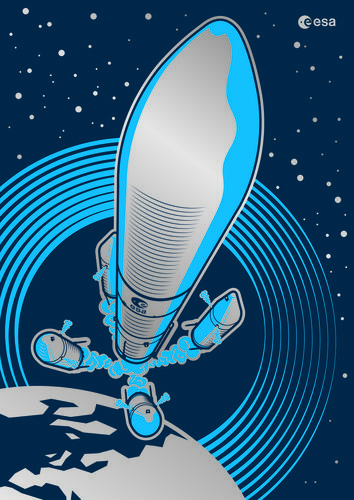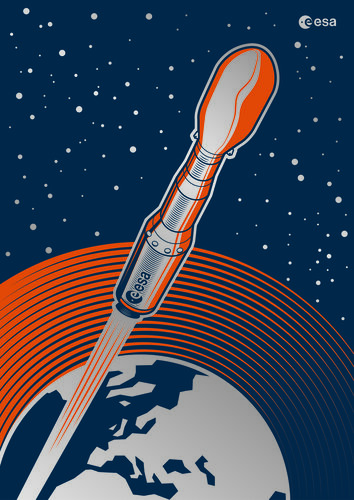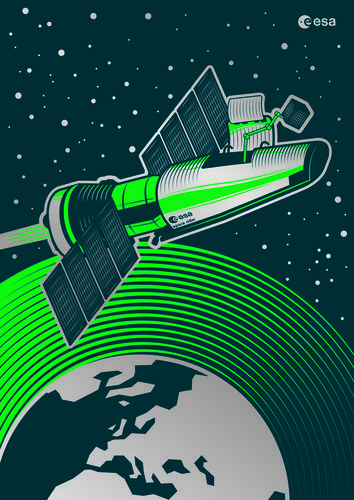
Copernical Team
Tuesday, 10 December 2024 03:39
Rocket Lab conducts hypersonic suborbital test launch for DoD
Sydney, Australia (SPX) Dec 10, 2024
 Rocket Lab USA, Inc. (Nasdaq: RKLB) has successfully executed a suborbital hypersonic mission in November, advancing technology testing for the Department of Defense under the Multi-Service Advanced Capability Hypersonics Test Bed (MACH-TB) initiative.
The MACH-TB project, designed to enhance hypersonic flight testing capabilities, supports technology development for the United States. Thi
Rocket Lab USA, Inc. (Nasdaq: RKLB) has successfully executed a suborbital hypersonic mission in November, advancing technology testing for the Department of Defense under the Multi-Service Advanced Capability Hypersonics Test Bed (MACH-TB) initiative.
The MACH-TB project, designed to enhance hypersonic flight testing capabilities, supports technology development for the United States. Thi
 Rocket Lab USA, Inc. (Nasdaq: RKLB) has successfully executed a suborbital hypersonic mission in November, advancing technology testing for the Department of Defense under the Multi-Service Advanced Capability Hypersonics Test Bed (MACH-TB) initiative.
The MACH-TB project, designed to enhance hypersonic flight testing capabilities, supports technology development for the United States. Thi
Rocket Lab USA, Inc. (Nasdaq: RKLB) has successfully executed a suborbital hypersonic mission in November, advancing technology testing for the Department of Defense under the Multi-Service Advanced Capability Hypersonics Test Bed (MACH-TB) initiative.
The MACH-TB project, designed to enhance hypersonic flight testing capabilities, supports technology development for the United States. Thi
Published in
News
Tagged under
Tuesday, 10 December 2024 03:39
SpaceX launches 23 more Starlink satellites
Washington DC (UPI) Dec 8, 2024
 SpaceX early Sunday launched 23 Starlink spacecraft from Florida's Cape Canaveral Space Force Station.
The 229-foot tall Falcon 9 rocket launched from Cape Canaveral Launch Complex 40 at 12:11 a.m. as it lit up the sky.
The first stage booster landed on the A Shortfall of Gravitas drone ship on the Atlantic Ocean 8 1/2 minutes later.
This was the second time this booster l
SpaceX early Sunday launched 23 Starlink spacecraft from Florida's Cape Canaveral Space Force Station.
The 229-foot tall Falcon 9 rocket launched from Cape Canaveral Launch Complex 40 at 12:11 a.m. as it lit up the sky.
The first stage booster landed on the A Shortfall of Gravitas drone ship on the Atlantic Ocean 8 1/2 minutes later.
This was the second time this booster l
 SpaceX early Sunday launched 23 Starlink spacecraft from Florida's Cape Canaveral Space Force Station.
The 229-foot tall Falcon 9 rocket launched from Cape Canaveral Launch Complex 40 at 12:11 a.m. as it lit up the sky.
The first stage booster landed on the A Shortfall of Gravitas drone ship on the Atlantic Ocean 8 1/2 minutes later.
This was the second time this booster l
SpaceX early Sunday launched 23 Starlink spacecraft from Florida's Cape Canaveral Space Force Station.
The 229-foot tall Falcon 9 rocket launched from Cape Canaveral Launch Complex 40 at 12:11 a.m. as it lit up the sky.
The first stage booster landed on the A Shortfall of Gravitas drone ship on the Atlantic Ocean 8 1/2 minutes later.
This was the second time this booster l
Published in
News
Tagged under
Tuesday, 10 December 2024 03:39
Blue Ring Pathfinder payload ready for integration on New Glenn first mission
Los Angeles CA (SPX) Dec 10, 2024
 Blue Origin has announced that its Blue Ring Pathfinder payload is prepared for integration ahead of the inaugural flight of its New Glenn rocket, NG-1, slated for later this year. This mission will also mark New Glenn's first certification flight under the National Security Space Launch program. Following the successful completion of a hotfire test, the payload will be mounted on the rocket at
Blue Origin has announced that its Blue Ring Pathfinder payload is prepared for integration ahead of the inaugural flight of its New Glenn rocket, NG-1, slated for later this year. This mission will also mark New Glenn's first certification flight under the National Security Space Launch program. Following the successful completion of a hotfire test, the payload will be mounted on the rocket at
 Blue Origin has announced that its Blue Ring Pathfinder payload is prepared for integration ahead of the inaugural flight of its New Glenn rocket, NG-1, slated for later this year. This mission will also mark New Glenn's first certification flight under the National Security Space Launch program. Following the successful completion of a hotfire test, the payload will be mounted on the rocket at
Blue Origin has announced that its Blue Ring Pathfinder payload is prepared for integration ahead of the inaugural flight of its New Glenn rocket, NG-1, slated for later this year. This mission will also mark New Glenn's first certification flight under the National Security Space Launch program. Following the successful completion of a hotfire test, the payload will be mounted on the rocket at
Published in
News
Tagged under
Tuesday, 10 December 2024 03:39
Week starts on ISS with spacewalk preparations and research activities
Los Angeles CA (SPX) Dec 10, 2024
 Preparations for an upcoming spacewalk highlighted the beginning of the week aboard the International Space Station (ISS) as the Expedition 72 crew members also engaged in a variety of research tasks across physics and biology.
Roscosmos Flight Engineers Alexey Ovchinin and Ivan Vagner focused their Monday schedule on preparing for a spacewalk scheduled for Dec. 19. The pair will exit thro
Preparations for an upcoming spacewalk highlighted the beginning of the week aboard the International Space Station (ISS) as the Expedition 72 crew members also engaged in a variety of research tasks across physics and biology.
Roscosmos Flight Engineers Alexey Ovchinin and Ivan Vagner focused their Monday schedule on preparing for a spacewalk scheduled for Dec. 19. The pair will exit thro
 Preparations for an upcoming spacewalk highlighted the beginning of the week aboard the International Space Station (ISS) as the Expedition 72 crew members also engaged in a variety of research tasks across physics and biology.
Roscosmos Flight Engineers Alexey Ovchinin and Ivan Vagner focused their Monday schedule on preparing for a spacewalk scheduled for Dec. 19. The pair will exit thro
Preparations for an upcoming spacewalk highlighted the beginning of the week aboard the International Space Station (ISS) as the Expedition 72 crew members also engaged in a variety of research tasks across physics and biology.
Roscosmos Flight Engineers Alexey Ovchinin and Ivan Vagner focused their Monday schedule on preparing for a spacewalk scheduled for Dec. 19. The pair will exit thro
Published in
News
Tagged under
Tuesday, 10 December 2024 03:39
Neuraspace expands satellite tracking with second optical telescope in Chile
Madrid, Spain (SPX) Dec 10, 2024
 Portuguese aerospace firm Neuraspace, a leading player in Space Traffic Management (STM), has activated its second optical telescope, now operational in Chile. This addition provides southern hemisphere coverage, complementing its first telescope located at Portugal's Beja air base. Together, these installations enable comprehensive global satellite tracking through Neuraspace's own systems, aug
Portuguese aerospace firm Neuraspace, a leading player in Space Traffic Management (STM), has activated its second optical telescope, now operational in Chile. This addition provides southern hemisphere coverage, complementing its first telescope located at Portugal's Beja air base. Together, these installations enable comprehensive global satellite tracking through Neuraspace's own systems, aug
 Portuguese aerospace firm Neuraspace, a leading player in Space Traffic Management (STM), has activated its second optical telescope, now operational in Chile. This addition provides southern hemisphere coverage, complementing its first telescope located at Portugal's Beja air base. Together, these installations enable comprehensive global satellite tracking through Neuraspace's own systems, aug
Portuguese aerospace firm Neuraspace, a leading player in Space Traffic Management (STM), has activated its second optical telescope, now operational in Chile. This addition provides southern hemisphere coverage, complementing its first telescope located at Portugal's Beja air base. Together, these installations enable comprehensive global satellite tracking through Neuraspace's own systems, aug
Published in
News
Tagged under
Tuesday, 10 December 2024 03:39
PLD Space secures euro 11 million loan to advance MIURA 5 launch site
Madrid, Spain (SPX) Dec 10, 2024
 PLD Space, the Spanish aerospace company specializing in reusable space launchers, has obtained euro 11 million in financing from COFIDES to propel the development of its MIURA 5 rocket launch site at the Guiana Space Centre (CSG) in Kourou, French Guiana. The total planned investment for the project, encompassing development, construction, and operations, stands at euro 16 million. This strat
PLD Space, the Spanish aerospace company specializing in reusable space launchers, has obtained euro 11 million in financing from COFIDES to propel the development of its MIURA 5 rocket launch site at the Guiana Space Centre (CSG) in Kourou, French Guiana. The total planned investment for the project, encompassing development, construction, and operations, stands at euro 16 million. This strat
 PLD Space, the Spanish aerospace company specializing in reusable space launchers, has obtained euro 11 million in financing from COFIDES to propel the development of its MIURA 5 rocket launch site at the Guiana Space Centre (CSG) in Kourou, French Guiana. The total planned investment for the project, encompassing development, construction, and operations, stands at euro 16 million. This strat
PLD Space, the Spanish aerospace company specializing in reusable space launchers, has obtained euro 11 million in financing from COFIDES to propel the development of its MIURA 5 rocket launch site at the Guiana Space Centre (CSG) in Kourou, French Guiana. The total planned investment for the project, encompassing development, construction, and operations, stands at euro 16 million. This strat
Published in
News
Tagged under
Monday, 09 December 2024 12:00
BepiColombo reveals Mercury in a new light

On 1 December 2024, BepiColombo flew past Mercury for the fifth time. During this flyby, BepiColombo became the first spacecraft ever to observe Mercury in mid-infrared light. The new images reveal variations in temperature and composition across the planet's cratered surface.
Published in
News
Tagged under
Wednesday, 04 December 2024 14:33
Silver Journeys – Ariane 6 woodcut poster
 Image:
Silver Journeys – Ariane 6 woodcut poster
Image:
Silver Journeys – Ariane 6 woodcut poster
Published in
News
Tagged under
Wednesday, 04 December 2024 14:37
Silver Journeys – Vega-C woodcut poster
 Image:
Silver Journeys – Vega-C woodcut poster
Image:
Silver Journeys – Vega-C woodcut poster
Published in
News
Tagged under
Wednesday, 04 December 2024 14:38
Silver Journeys – Space Rider woodcut poster
 Image:
Silver Journeys – Space Rider woodcut poster
Image:
Silver Journeys – Space Rider woodcut poster
Published in
News
Tagged under

